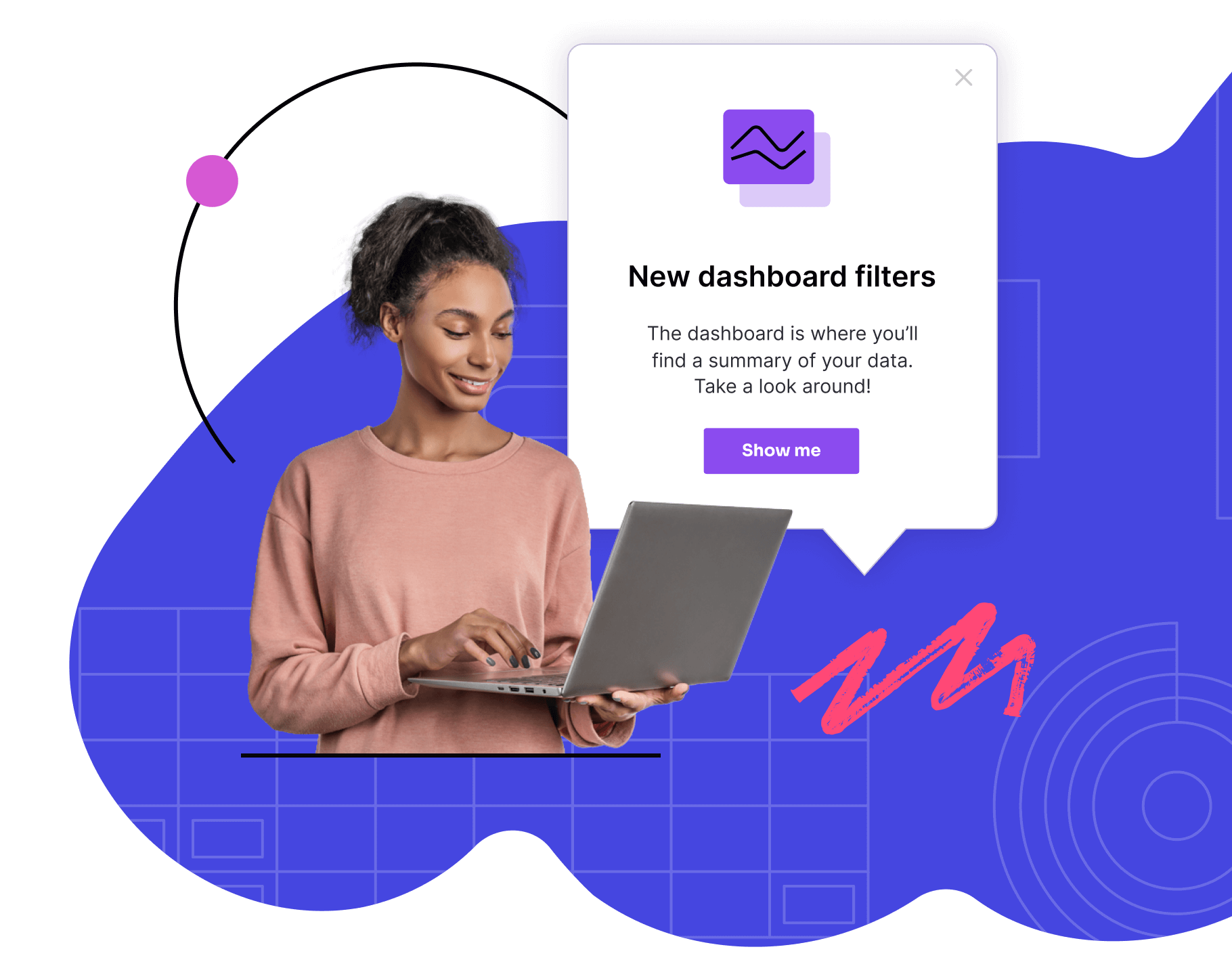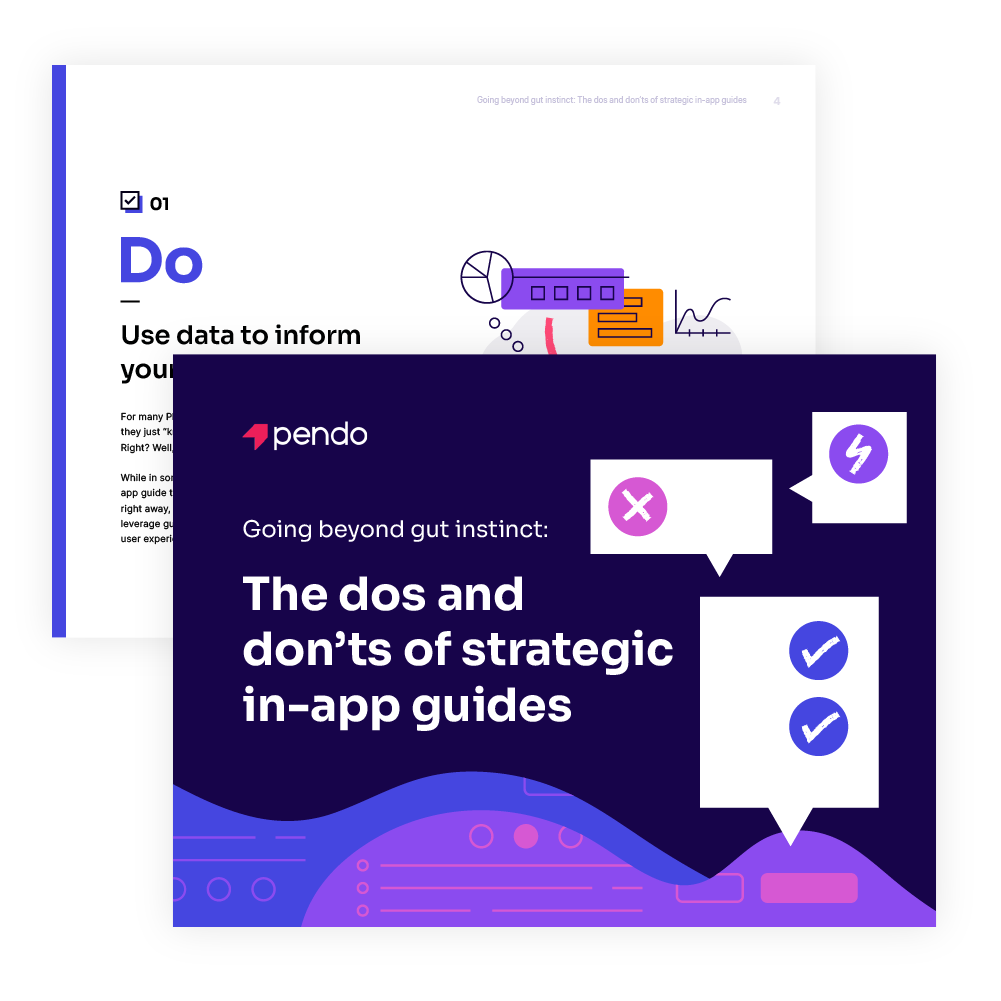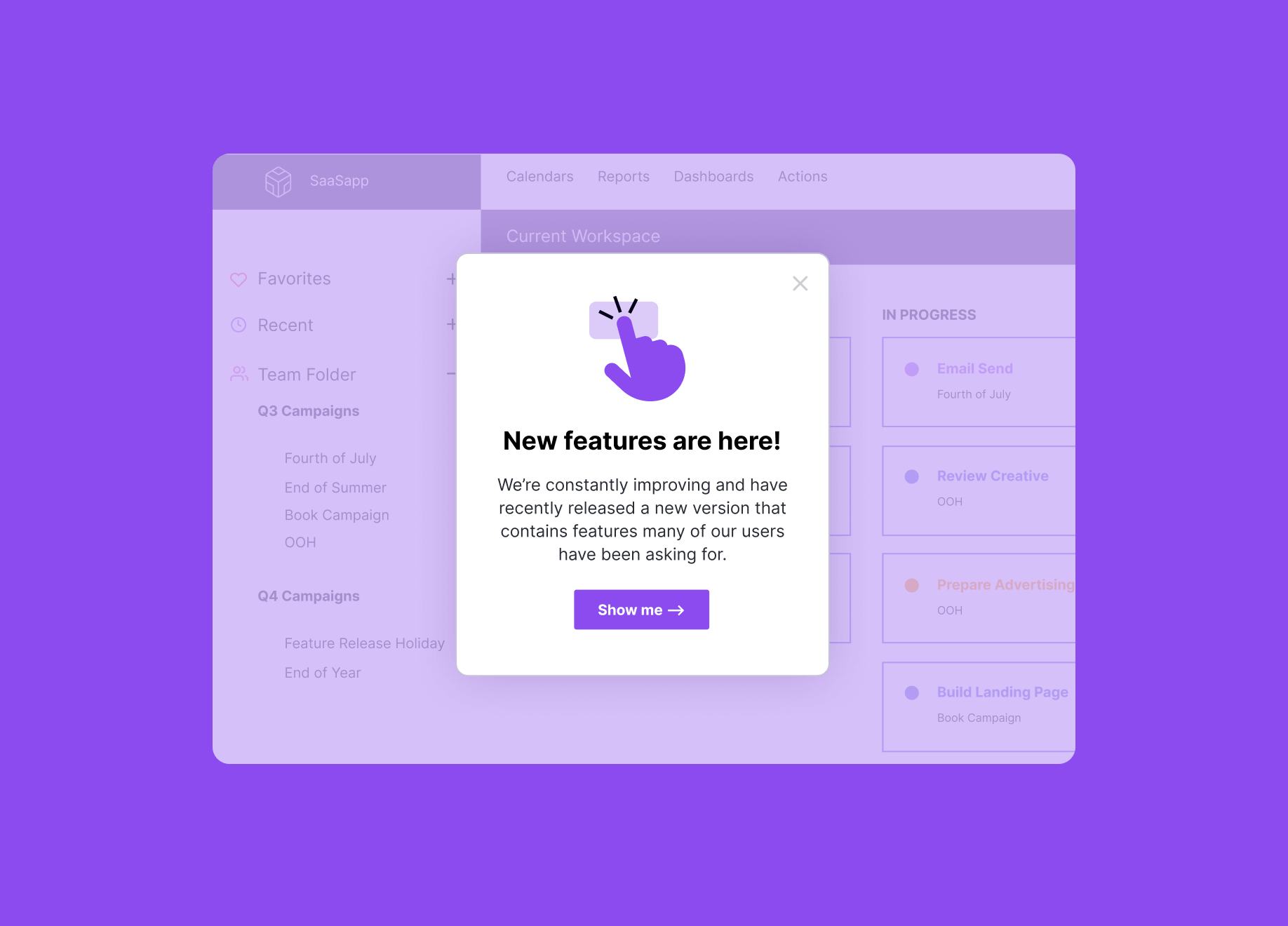
DEEP DIVE - 12 min read
In-app messaging
In-app guides provide a technical capability that allows a company to communicate with users directly through their product.
Last updated: April 9, 2024
Dive deeper
Table of Contents
What is in-app guidance?
In-app guidance allows a company to communicate with users (whether they are external customers or internal employees) directly through the product. The benefits of this is that it helps users or employees get more value from the product and explore new features. Either new or advanced users can benefit from in app guides.
How does in-app messaging work?
In-app messaging involves displaying lightboxes, tooltips, surveys, banners, and other messaging formats right inside the app, while users are engaged with it. The information displayed can be designed to help users get past friction points, support cross-sell/upsell initiatives, and collect user feedback, and more. Because it displays messages while the user is actively using the product, in-app messages tend to have a higher response rate than push notifications or email messages.
What are the different types of in-app messages?
In-app messaging is common in both web and mobile applications, and can be delivered in several different formats, including:
Lightbox
Also called a “pop-up” or a “modal,” this style of in-app message often dims or darkens the rest of the page to emphasize the content. Some lightboxes even prevent the user from interacting with the rest of the page until the message is dismissed. Because lightboxes can be intrusive, this format is best for important user notifications that require acknowledgement.
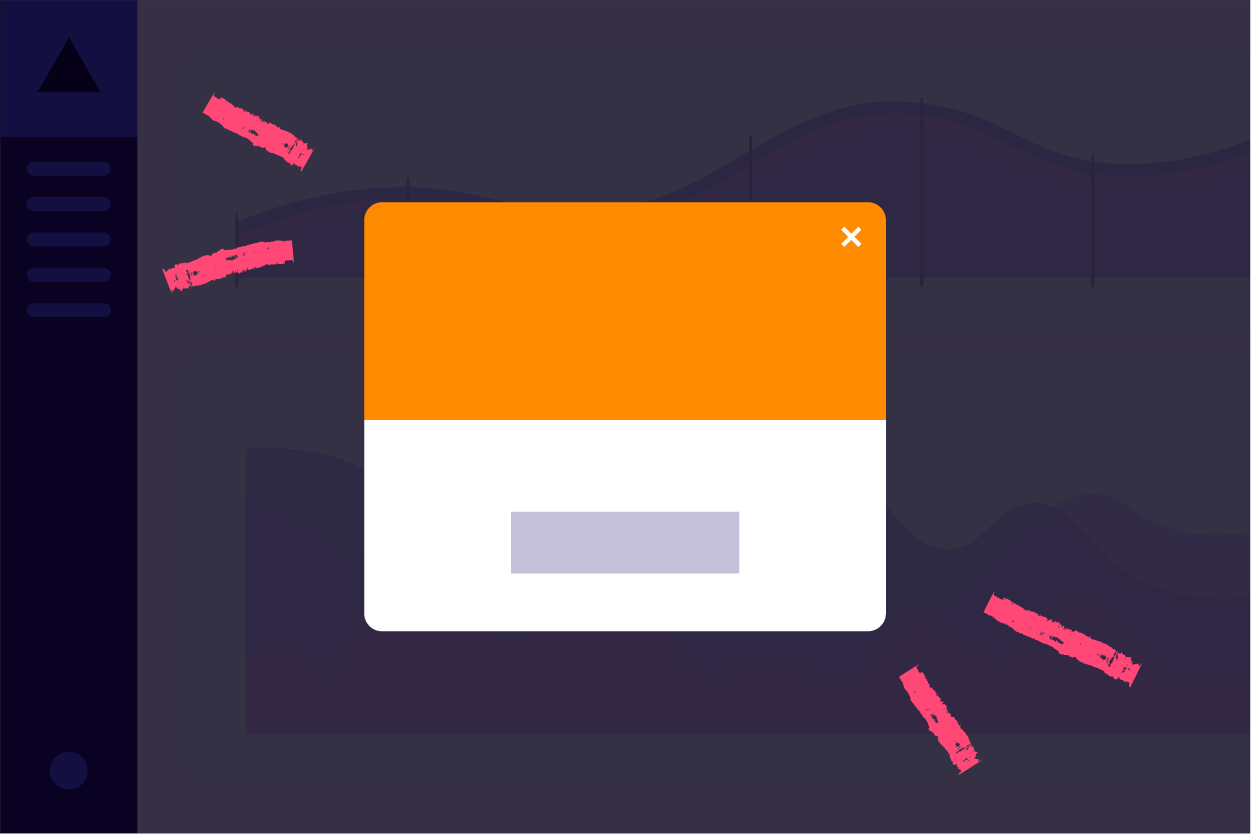
Tooltip
A brief, informational message triggered by a user action, these messages tend to be shorter and anchored to a specific element in a product. “Hovers” are the most common form of tooltip implementation. Hovers are messages that appear when the user “mouses” over a navigation menu, interactive element, or hotspot displayed near a new feature. Tooltips can be an effective way to answer frequently asked questions or provide additional context for new features, but they must be tested to ensure they don’t disrupt the intended workflow.
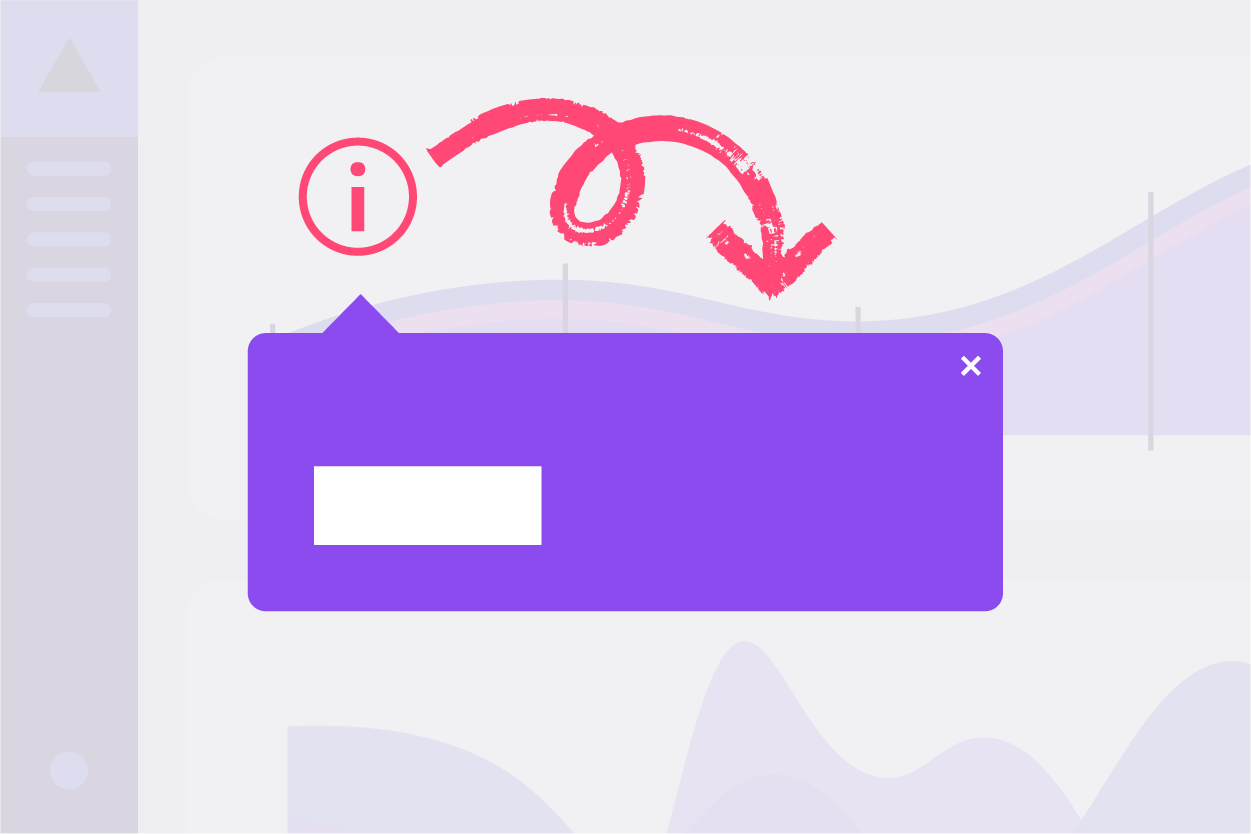
Banner
These informative messages are aligned to the edge of the browser window or phone screen. They are less intrusive than lightboxes, as the rest of the screen typically remains clickable.
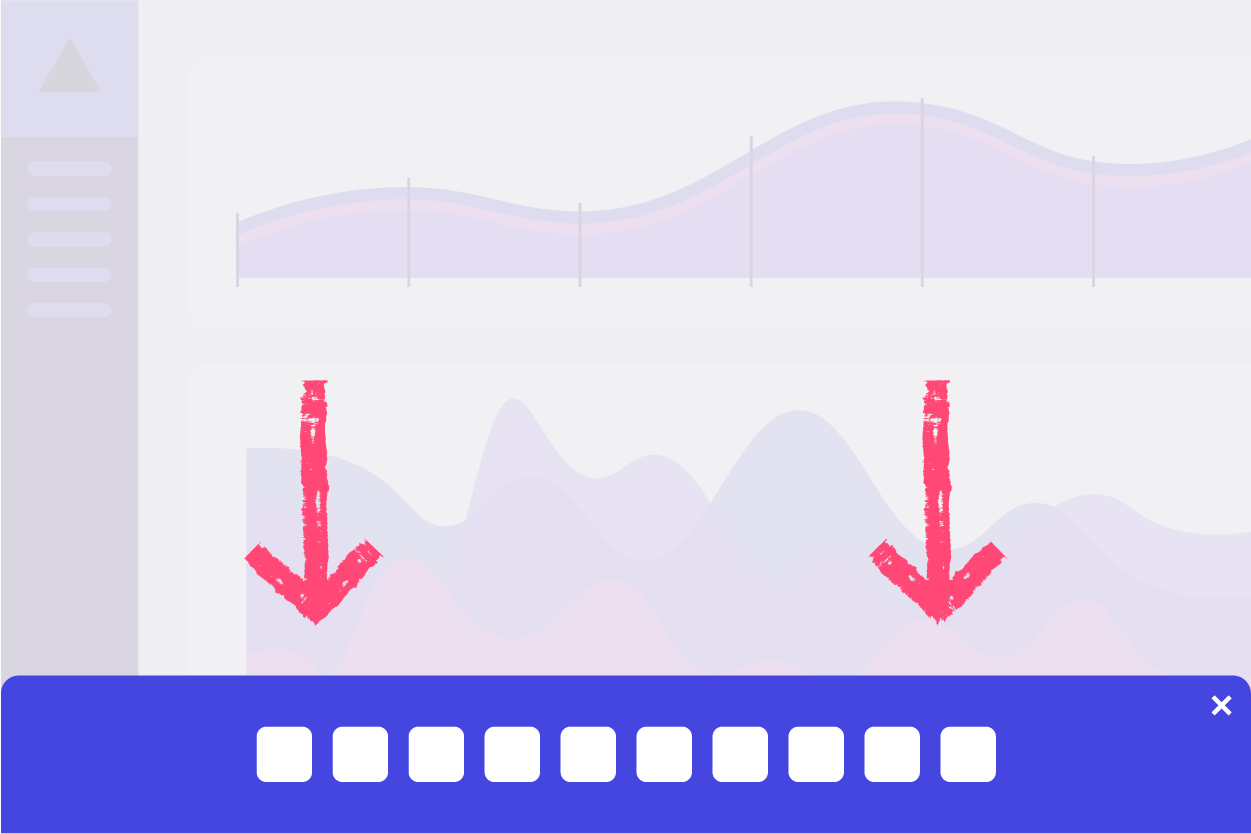
User Guides
These multi-step messages are designed to walk users through a complete workflow, and can be executed as a combination of lightboxes, tooltips, banners, and other message formats. User guides are often applied to aid with onboarding or introduce a new process. Product management and customer success teams should measure completion and drop off rates so they can identify if the walkthrough is too long or if any steps are too complicated.
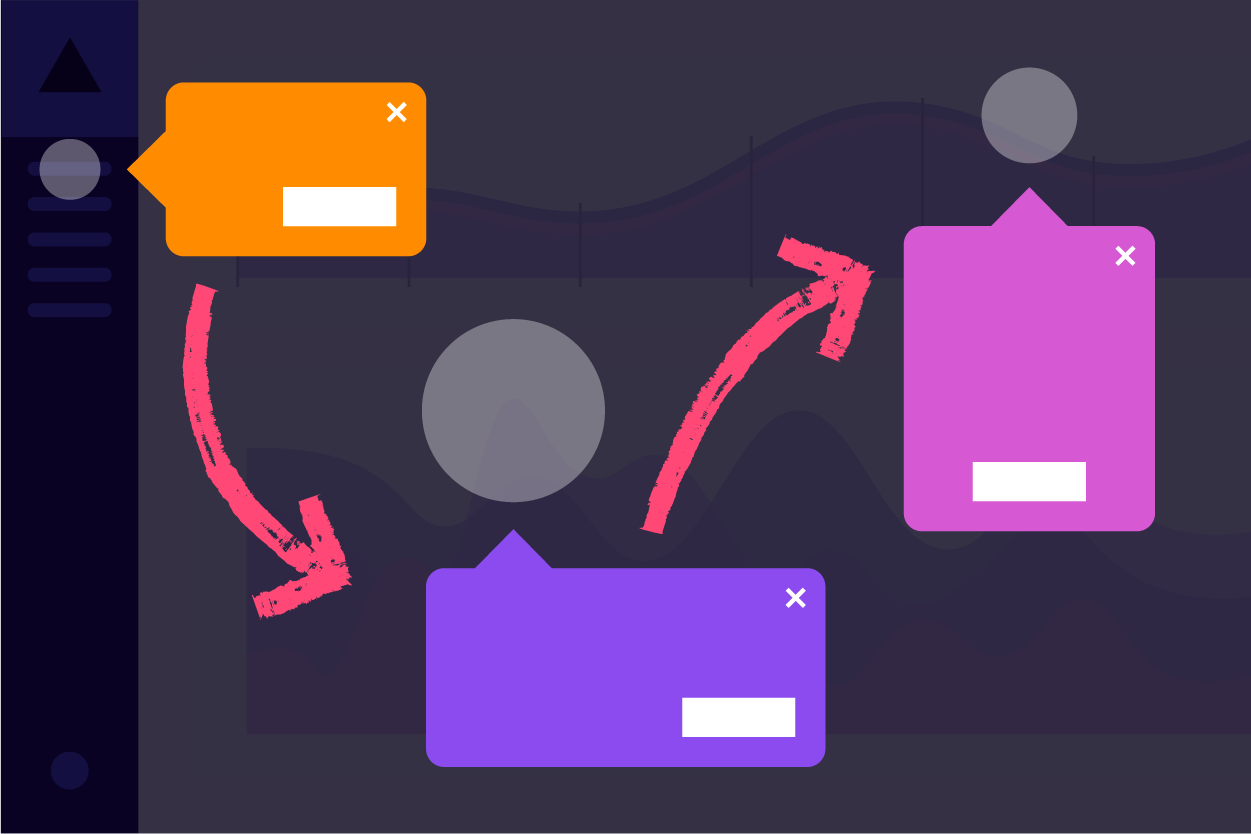
Interstitial
Literally “to put between,” an interstitial message is one that displays between two screens or pages in a user’s workflow. Interstitials are sometimes referred to as “splash screens.” They are commonly used for maintenance announcements or important feature updates, and they are most frequently inserted between the login screen and the application’s home screen.
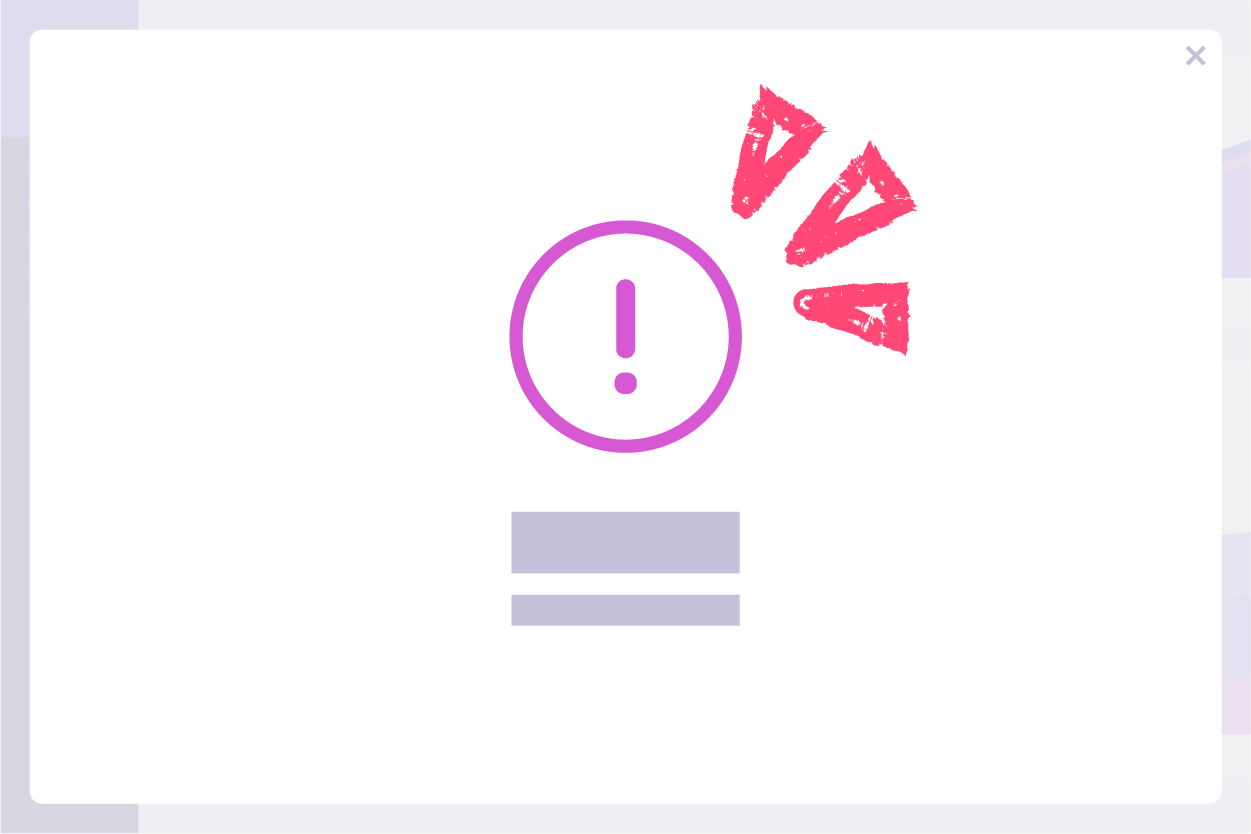
Survey
Typically embedded in a lightbox or a banner format, surveys are a form of in-app messaging that invites user interaction. Whether a simple yes/no, multi-select, drop down, or open text question, surveys enrich user data, gather user feedback, and monitor sentiment.
Who benefits from in-app guides?
A company’s customers are the ultimate beneficiary of in-app messaging. Through in-app guides, companies can deliver updates, resources, and guided walkthroughs within the product itself, ensuring information is timely and tailored to users’ needs. If the product contains a bug or users consistently struggle in one area of the app, support teams can use in-app messages to proactively help users avoid confusion and frustration. In the end, companies that leverage in-app guidance benefit, too, since it helps improve the customer experience and fuels additional positive business outcomes.
Employees familiarizing themselves with the software they’re required to use also benefit immensely from in-app messaging. It allows new hires to undergo a tailored onboarding process with guidance relevant to their specific roles. Existing employees, meanwhile, can receive customized updates about new features, notifications about security best practices, reminders of tasks to accomplish, and notifications for countless other purposes. The presence of such guidance where it’s most needed leads to less time spent searching for answers or filing support ticket requests. Employers thus also benefit from in-app messaging because of the resulting increased productivity it fosters.
What are common use cases for in-app messaging?
In-app messages tend to fall into several distinct categories, each with different objectives:
Information
In-app messaging allows companies to educate and inform their users at scale. Compared to outbound email or information warehoused on a blog or in a knowledge base, in-app messages can be delivered while the user is active in the product, thus increasing resonance. Key use cases for informational messages are user onboarding, alerts about updates, maintenance and compliance notifications, and feature adoption. This category of messages tends to benefit from clear and concise language, minimal graphics or images, and often links to supporting documentation or external resources. For example, Cisco Cloudlock used an in-app message to inform users of a cyberattack that had begun spreading around the world, giving them the option to allow Cisco to automatically revoke malicious apps’ access to their systems.
Delight
In-app messaging also allows companies to trigger notifications based on user actions. These behavior-aware messages can be used to reward users, acknowledge progress, or respond to external events like a user’s birthday or newsworthy events about the company or product. Delight messages can take the form of progress trackers, usage streaks, or gamification. Casual, personalized language and eye-catching graphics tend to work best with this message format.
Conversion
In addition to behavioral triggers, in-app messages can also trigger based on timing or user metadata like location. This flexibility opens up a variety of marketing and conversion use cases like alerting a user to the expiration of their free trial, targeted upsell offers, or invitations to upcoming events. This category of messaging tends to favor clear and compelling language, urgency drivers, and other tactics common in the e-commerce space.
Digital adoption
Companies can leverage in-app messaging not just for their customers, but for their own employees as well. More and more, in-app messaging is becoming the go-to method for HR, IT, information security, and change management leaders to onboard new hires, communicate best practices, and introduce guidance around new software or software features to their teams. Moving tailored guidance inside apps gives the right employee the right information at the right time, easing friction and increasing productivity in the process.
What is the difference between in-app messages and push notifications?
Push notifications refer to messages an app sends out that appear on the home screen of a user’s mobile device. They are a useful tool to prompt users who are not currently using an app to engage with it in some way, as well as a means to help keep an app top-of-mind. At the same time, the only users who will receive push notifications are those opted in to receive them. Excessive deployment of push notifications (especially those irrelevant to a user’s wants and needs) risks causing users to opt out of them or even remove an app from their device entirely.
Unlike push notifications, in-app messages (as the name suggests) populate within apps themselves. Their presence within an app means these messages are much more context-specific than push notifications and Pendo guides is perfect for just that. They can serve a variety of functions, from introducing a new user to the basics of an app, to notifying existing users of new app features and providing guidance around them, to nudging users to accomplish specific tasks.
